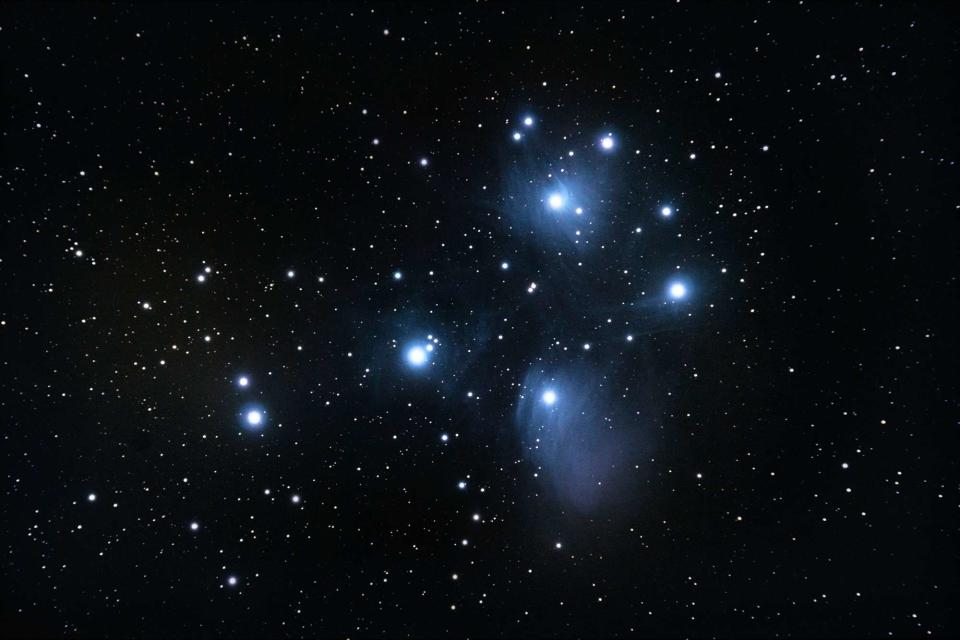See a Sparkling Star Cluster, Jupiter, and the Milky Way Core in February's Night Sky
Here’s what to look for in this month's night sky.

Westend61/Getty images
April’s total solar eclipse may be topping news headlines, but the months leading up to the hyped event are full of astronomical sightseeing opportunities, too — starting with February. This month, night sky enthusiasts have a host of interstellar attractions to choose from. There’s a meteor shower, planet conjunction, and an above-average chance to see the northern or southern lights, not to mention an extra night for stargazing on leap day come Feb. 29.
For North American stargazers and astrophotographers, February also marks the return of the Milky Way core. The bright, dynamic core of our home galaxy is visible in the northern hemisphere from February to October. To see it this month, you’ll have to set your alarm early; it rises between 3 to 4 a.m., according to SLR Lounge. It rises earlier and earlier each night until fall.
Come for the Milky Way, stay for the planets and stars. Here’s what to look for in February’s night sky.
Feb. 1: Moon Meets Bright Spica
Kicking off the month, the waning gibbous moon will glide by blue-hued Spica, the brightest star in the Virgo constellation, according to stargazing app SkySafari. You can see the duo together either with your naked eye or, better yet, a pair of stargazing binoculars, from the night of Jan. 31 to the early morning of Feb. 1 in the southern sky. The moon will be within one degree (or finger’s width) of Spica by 3 a.m. ET.
Feb. 8: Alpha Centaurid Meteor Shower Peaks
From Jan. 28 to Feb. 21, the Alpha Centaurid meteor shower will decorate the skies near the constellation Centaurus. This shower is visible in the southern hemisphere, and generates a relatively low rate of meteors per hour: around six during the peak on Feb. 8, according to High Point Scientific. That said, if you find yourself in the southern hemisphere, particularly in a dark-sky location, it’s worth heading out; light from the dim waning crescent moon won’t disrupt the show.
Feb. 9: New Moon and Planet Alignment
A dark, new moon night promises the best odds for stargazing — and this month, it hits on Feb. 9. This evening, and the nights and early mornings surrounding it, provide top-notch viewing of our neighbors near and far. Look to the west-northwest sky in the evening to early night to see the spiral Andromeda Galaxy, the closest major galaxy to the Milky Way. According to NASA, it’s visible to the naked eye on moonless nights — particularly in dark-sky-certified destinations. Gaze to the southwest sky around the same time to catch the Pleiades star cluster, Uranus, and Jupiter lined up near the Taurus constellation. Stay up late to catch the Milky Way core hovering just above the east-southeast horizon around 4 a.m. ET as well.
Feb. 14: A Jupiter-Moon Meet-Up
The moon and Jupiter will get cozy this Valentine’s Day, with Jupiter glowing just above and left of the waxing crescent moon, according to NASA. Look for the pair just five degrees, or three finger widths, apart after sunset. The duo, visible in the western sky, will travel down toward the horizon through the night. A few other familiar favorites will join in the Valentine’s Day celebrations, too, including green-tinged Uranus, which you’ll find hovering above Jupiter, and Neptune, which will be visible closer to the western horizon around 8 p.m. ET.
Feb. 16: Moon Nears Pleiades
It will be particularly easy to spot Pleiades, also known as the seven sisters star cluster, from Feb. 16 to 17. According to NASA, the nearly half-illuminated moon will slide within two degrees of the cluster the evening of Feb. 16. Pleiades will move down and further from the sun as the night wears on. This asterism, located within the Taurus constellation, is a fan favorite among stargazers. The objects formed from a massive cloud of dust and gas, and according to Space.com, it’s one of the closest star clusters to Earth. You can view it with the naked eye, or with a telescope or pair of stargazing binoculars.
Feb. 24: Full Snow “Micromoon”
According to The Old Farmer’s Almanac, Feb. 24 at 7:30 a.m. ET will see February’s full snow moon at peak illumination. The moon won’t be visible exactly at this time, but you can catch it the night before or around sunset on Feb. 24, when it will radiate near the eastern horizon. This month’s full moon is known as a micromoon, the name given to a moon that’s at its farthest point from Earth — the opposite of the bright, large supermoon. The snow moon name stems from the correlation to February’s traditionally heavy snowfall.
For more Travel & Leisure news, make sure to sign up for our newsletter!
Read the original article on Travel & Leisure.

